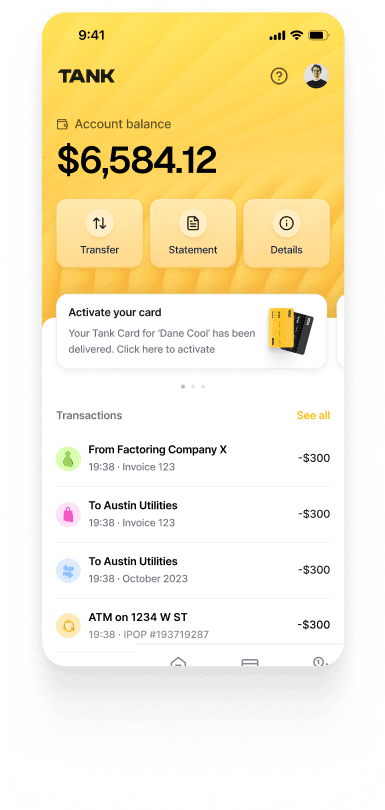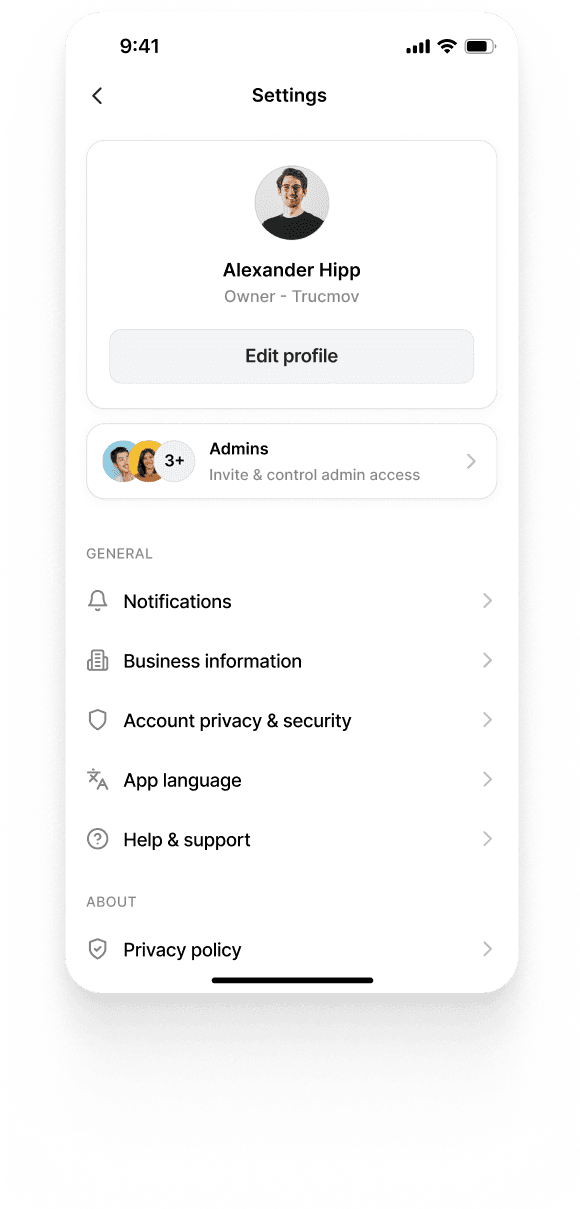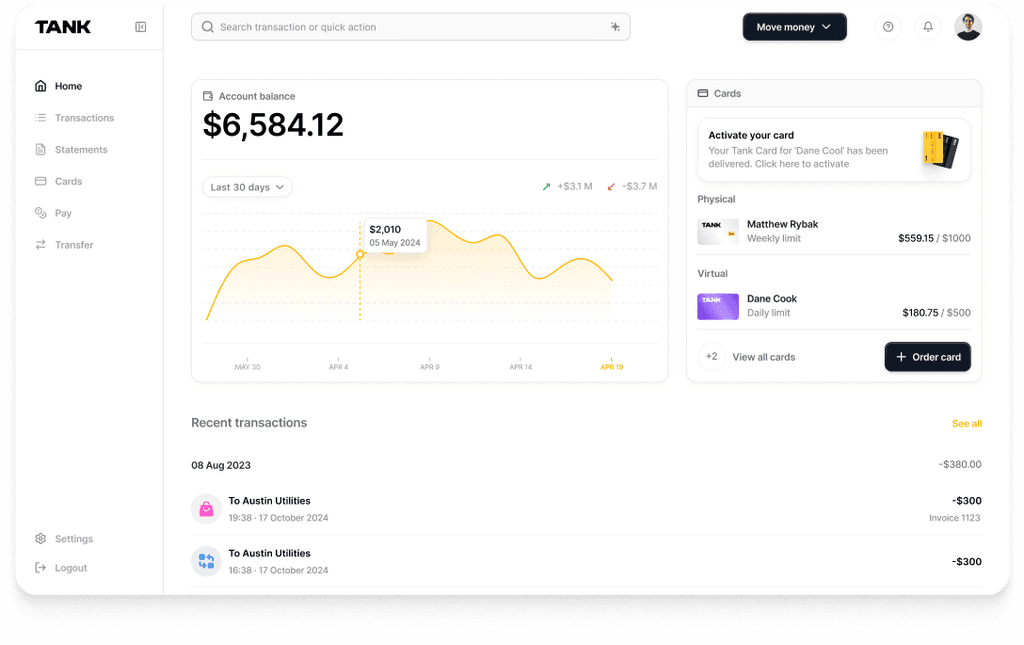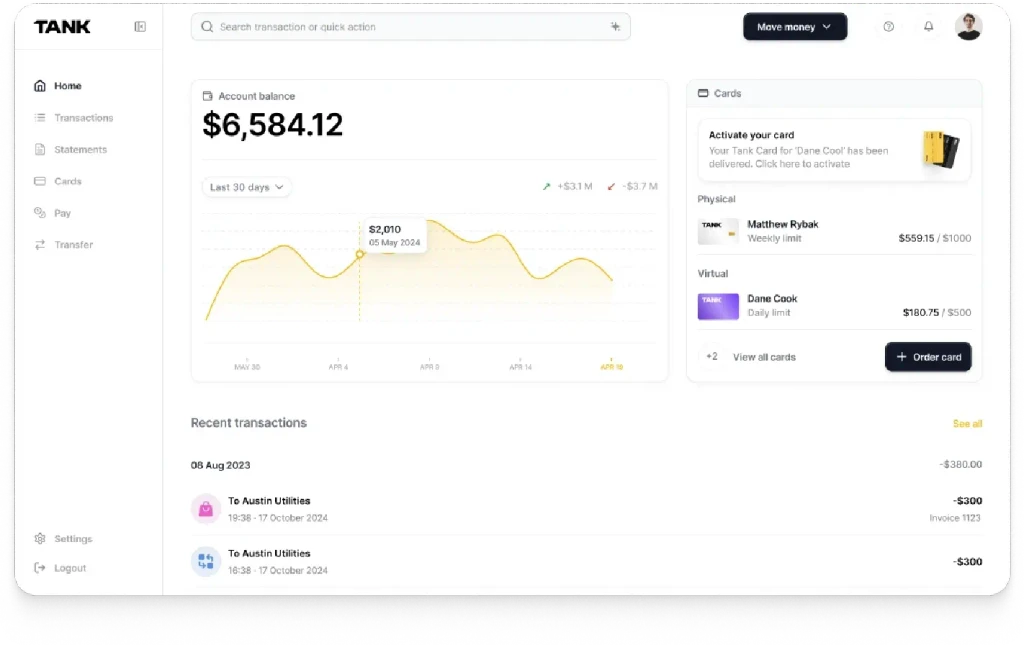Exploring Spending Patterns of Fortune 500 Companies in the US
Summary
This article examines technology spending trends among US Fortune 500 companies across sectors like IT, retail, healthcare, and energy. It highlights how companies like Microsoft, Walmart, and ExxonMobil are investing in AI, cloud computing, and sustainability to drive innovation, enhance operations, and meet evolving consumer and environmental demands, while also identifying cost-saving opportunities.
Key insights:
Tech Trends Post-COVID: The pandemic accelerated digital transformation, pushing companies to invest heavily in AI, cloud computing, and sustainability efforts.
Microsoft's AI & Cloud Leadership: With major investments in AI and cybersecurity, Microsoft is driving innovation, operational efficiency, and sustainability across industries.
Walmart’s Retail Innovations: Walmart is using AI to enhance inventory management, personalize shopping experiences, and reduce waste through sustainability initiatives.
Healthcare AI Applications: UnitedHealth Group's focus on AI-powered diagnostics, telemedicine, and predictive care is transforming patient care and operational efficiency.
ExxonMobil’s Digital Shift: AI-driven operations, quantum computing, and sustainability efforts like algae biofuels and carbon capture are reshaping energy and utilities.
Cost-Saving Opportunities: Optimizing cloud infrastructure, expanding automation, adopting open-source solutions, and investing in energy efficiency can reduce costs while fostering growth.
Introduction
Analyzing the Fortune 500 provides a lucid overview through which we may examine trends in technology spending across different industries. It is a diversified collection of the biggest and most significant corporations in the United States. Particularly in the wake of the COVID-19 epidemic, which has hastened the adoption of digital technology and transformed organizational goals, it is imperative to comprehend these investment patterns. Insights into technology investments show how organizations are tackling environmental concerns and changing customer expectations in addition to operational efficiencies as they maneuver through a quickly changing business environment. This analysis will look at trends in technology investment across a number of industries, such as retail, healthcare, energy, and information technology. Notable case studies that show how big businesses are using new technologies to improve their operations and spur growth will also be highlighted.
What is Fortune 500?
The Fortune 500 is an annual ranking by Fortune magazine of the 500 largest companies in the United States based on total revenues. It includes both public and private companies that file financial statements. In 2024, Walmart held the top position for the 12th consecutive year with $648 billion in revenue, followed by Amazon and Apple. The list highlights the scale of American businesses and serves as a prestigious mark of success. The 2024 rankings also saw 14 new entries, including DoorDash and Monster Beverage.
Annual Expenditures of Fortune 500 Companies by Category
Fortune 500 companies allocate significant funds across various operational categories. This section provides an overview of spending patterns for four major corporations—Apple, Walmart, CVS Health, and UnitedHealth Group—using their reported financial data to showcase the scale of their expenditures in categories like research and development, operating costs, and capital expenditures.
1. Research and Development (R&D)
R&D is a crucial area of investment, especially in the technology and healthcare industries. Apple Inc., renowned for innovation, allocated $7.7 billion to R&D in Q4 2023, maintaining its focus on product development such as the iPhone, Apple Watch, and other services. Its total spend on R&D came to a record 29.92 billion U.S. dollars in the 2023 fiscal year, perhaps largely in part to the Apple Vision Pro. Annual R&D and technology investment was reported to be $5 billion for UnitedHealth Group in a 2022 report.
2. Cost of Goods Sold (COGS) and Cost of Sales (COS)
The cost of goods sold (COGS) refers to the direct costs associated with producing goods sold or inventory acquired by a company but excluding indirect expenses like labor, distribution, and other overhead. The cost of sales (COS) encompasses all these costs.
COGS is particularly high for retailers and healthcare providers. Walmart, the largest global retailer, reported $490.2 billion in cost of sales for 2024, which makes sense given its top ranking on the Fortune 500 list.
UnitedHealth Group's COGS was $38.7 billion in 2023, mainly driven by medical costs for healthcare services, pharmaceuticals, and other health-related products. Apple's COS for Q4 2023 was $64.7 billion, with a gross margin of $54.8 billion.
3. Operating Costs
Operating costs encompass a wide range of expenses required to keep a business running. UnitedHealth Group reported total operating costs of $54.6 billion for 2023. These expenses include administrative costs, delivery of medical services, cost of goods sold, and depreciation and amortization. They acknowledged that they had failed to achieve their targeted improvements in operating cost productivity.
Apple reported operating expenses, including selling, general, and administrative costs (SG&A) and R&D, of $14.5 billion in Q4 2023. This reflects its investment in maintaining a global retail presence and high customer service standards. CVS Health reported operating costs of more than $344 billion, which included the COGS, health care costs, some restructuring charges, and then some litigation costs and loss of assets.
Walmart reported an SG&A of almost $132 billion in 2024, reflecting the cost of its vast inventory and logistics operations. Its net operating lease lease obligations for 2024 came to around 14.4 billion dollars.
4. Marketing and Advertising
Marketing expenditures are essential for customer engagement and market presence. Walmart's global advertising strategy consisted of digital, television, and print advertisements which are recorded as part of the SG&A. Advertising in particular amounted to 4.4 billion dollars in 2024. Apple is also known to spend billions of dollars on advertising.
5. Investing Activities and Financing Activities
Investing activities include long-term investments such as purchases of property, equipment, capitalized software, and other acquisitions. Financing activities can include common share repurchases, repayment of term debt, and dividends paid, among other things. Both of these understandably require large capital, especially at the Fortune 500 scale.
Apple invested almost $2 billion in Q4 2023, and approximately $30 billion was used in financing activities in the same quarter. UnitedHealth Group reported a cash flow of almost 27 billion dollars used in investing and financing activities in 2023. CVS Health reported that the net cash used in investing activities for 2023 was $20.8 billion, and that for financing activities $2.6 billion. Walmart reported net cash used as $21.3 billion and $13.4 billion for investing and financing activities respectively in the fiscal year ending on January 31, 2024.
As showcased by these numbers, Fortune 500 companies allocate massive resources across various operational categories such as R&D, cost of goods sold, operating costs, marketing, and financing and investing activities. These expenditures are crucial for sustaining their market leadership and ensuring continued growth, with significant portions devoted to innovation, infrastructure, and customer engagement. In the next few sections, we will explore what Fortune 500 companies are doing in terms of technology investments and suggest spending strategies based on existing case studies.
Technology Spending in the IT Sector

Digital transformation and innovation are being spearheaded by Fortune 500 IT organizations in the quickly changing technology world. IT giants like Microsoft are heavily investing in cloud computing, artificial intelligence, and sustainable technology as businesses depend more and more on them to be competitive. These businesses are bringing about change not only in their respective sectors but also in the economy of the world at large, from creating cutting-edge AI infrastructure to introducing environmentally beneficial solutions. As an example of the larger trend of Fortune 500 firms spending extensively in technology to drive inclusive growth, increase operational efficiencies, and solve urgent environmental concerns, consider Microsoft's recent $1.3 billion investment in AI infrastructure and skilling programs in Mexico. With these developments, the IT industry keeps pushing the boundaries of technology development and encouraging ethical and sustainable behavior.
1. Investment in AI and Cloud Infrastructure
Leading the IT industry, Microsoft is making large investments in AI and cloud computing to propel technical progress in several sectors. In 2024, Microsoft announced its investment of $1.3 billion in Mexico's cloud and AI infrastructure, boosting the country's processing capacity and fostering digital transformation. The Artificial Intelligence National Skills Program, which aims to train 5 million people in AI skills, is also supported by this expenditure. Microsoft guarantees scalability and accessibility for enterprises while promoting economic growth through digital innovation by concentrating on creating AI and cloud technologies.
2. Microsoft’s Multi-Billion Dollar Investment in Security Innovations
Microsoft has responded to the growing sophistication of cyber threats by making large investments to support security technologies. The corporation invests billions of dollars in cybersecurity every year, with more than $20 billion set aside for improvements in security between 2021 and 2025. These grants help with a number of projects, such as employing over 3,500 committed security engineers, scientists, and researchers worldwide. Microsoft has a huge task ahead of it protecting its extensive cloud infrastructure from ongoing cyberattacks. About 1.5 million cyberattack attempts are thwarted by the corporation every day, and each one yields vital information that strengthens its cybersecurity defenses.
Beyond investing in human resources, Microsoft is investing in the development of cutting-edge technologies such as quantum-secured networks and AI-powered threat detection. Using real-time data from 1.5 million threats each day, Microsoft uses these resources to improve its intelligent security graph continuously, strengthening its defenses and safeguarding its cloud infrastructure. This degree of dedication not only protects Microsoft's internal systems but also guarantees that its clients, who range in size from private citizens to Fortune 500 firms, can rely on the platform's defense against new online dangers.
3. Advancements in AI for Business Operations
Microsoft is putting more effort into artificial intelligence than just infrastructure; there are useful use-cases for enterprises as well. Businesses like Cemex, for instance, have embraced Microsoft AI technologies, increasing productivity in areas like supply chains, manufacturing, and sales. These AI-driven solutions, like Technical Xpert, provide operational insights and real-time data analytics to help businesses make better decisions. Microsoft's artificial intelligence (AI) technologies can help small and medium-sized businesses (SMBs) become more efficient and competitive. A recent survey conducted in Mexico revealed that 57% of SMBs use AI for data-driven decision-making and consumer customization.
4. AI for Sustainability and Environmental Impact
Microsoft is also applying AI to tackle global issues, especially those related to sustainability. The corporation is investing heavily in clean energy and has set lofty targets to become carbon-negative by 2030. Microsoft is making a significant contribution to the worldwide shift towards renewable energy, having contracted for approximately 34 GW of renewable energy in 24 countries. Projects like the biochar program in Guanajuato, Mexico, seek to eliminate 95,000 tons of CO2, demonstrating Microsoft's dedication to lowering its environmental impact through artificial intelligence and cutting-edge technology.
5. AI for Social Good: Health and Connectivity
Microsoft also aims to use AI to solve societal problems in addition to innovative business practices. The company is tackling healthcare challenges such as retinopathy of prematurity (RoP) by creating AI models that facilitate early diagnosis and treatment for preterm babies as part of the AI for Good program. Furthermore, Microsoft and Viasat's partnership is bringing internet access to more than 1.45 million people in Mexico, promoting economic growth and education in neglected areas. This emphasis on connectivity and health highlights Microsoft's larger goal of leveraging AI to foster equitable, long-term growth.
6. AI Infrastructure and Security
Microsoft's investment in technology is bolstered by its Azure AI infrastructure. The company is using AI supercomputing capabilities to improve systems for large-scale AI models, which can be used by organizations globally to increase productivity and innovation. Enterprise-level privacy and security safeguards are also incorporated into the architecture of this infrastructure, which is essential given the surge in cyber threats in the modern day. Microsoft helps companies enhance their security posture while cutting operating expenses by incorporating AI into its cloud services, which encourages further industry adoption of AI-powered solutions.
Through these programs, Microsoft stands as a strong example of how Fortune 500 IT organizations are advancing technology while also making significant investments in artificial intelligence (AI) and cloud infrastructure to support global development in the social, economic, and environmental spheres.
Technology Spending in Retail Sector

To remain competitive, Fortune 500 retailers are investing more and more in digital transformation, with Walmart being a clear leader in this area. Walmart's substantial technological expenditures provide an important case study of how retail behemoths use state-of-the-art instruments such as cloud platforms, artificial intelligence (AI), and machine learning (ML) to improve customer experience, operational efficiency, and overall business growth.
1. AI in Inventory Management
Walmart's inventory management systems have a strong artificial intelligence integration. Walmart predicts product demand, streamlines its supply chain, and enhances inventory tracking throughout its 10,500 stores and distribution centers by utilizing artificial intelligence. Furthermore, Walmart maintains low prices while guaranteeing product availability by using AI to assist predict consumer demand and seasonal trends. The company provides a flawless online and in-store purchasing experience as a result of its real-time processing of millions of data points.
AI-driven solutions, for instance, track inventory movements to assist retailers in keeping appropriate stock levels. This innovation has reduced waste while guaranteeing that clients find what they need. It has also enhanced accuracy and saved costs. Walmart maintains its everyday low-cost model by utilizing AI-driven insights to closely link its technology investments with its business strategy.
2. Cloud-Powered Personalization
As a result of adopting cloud-based technology, Walmart is now able to provide extremely personalized shopping experiences. Every consumer interaction—whether it is placing an item in the cart or finishing a transaction—produces data that is instantly processed. Walmart evaluates this data using its cloud systems, which can then be used to provide accurate product and service suggestions to the users.
Walmart has made an investment in "Element," a machine learning platform that streamlines the creation of AI and ML applications and improves customization. With the help of this platform, Walmart's engineers and data scientists can swiftly implement AI solutions that optimize business effect while personalizing product recommendations based on search habits and preferences of customers. Walmart has been able to increase in-store engagement and draw in millions of online shoppers because of this degree of personalization.
3. GenAI-Powered Shopping Assistant
Walmart recently introduced a generative AI (GenAI) shopping assistant to its mobile app, designed to enhance the customer journey from product discovery to purchase. This technology, which is still in beta testing, helps consumers locate gadgets or household goods that suit their particular needs by using natural language processing. When customers ask inquiries such as "Which TV is ideal for watching sports?" the assistant responds with personalized suggestions based on the qualities of the product that match the customer's preferences.
Walmart intends to integrate the assistant into their online and in-store retail strategy by gradually enhancing its skills to provide a more comprehensive level of customization.
4. AI in Waste Management
Walmart's AI-powered trash management technology bolsters its sustainability focus. With the help of this technology, store workers may reduce waste in real time by identifying the main causes of it. AI systems, for example, might recommend price reductions or donations if goods are about to expire or have minor defects.
This program is a perfect example of how technology can support company sustainability objectives while also increasing business efficiency. The system, which is undergoing testing in a few locations, provides workers with useful information, enabling Walmart to significantly reduce food and product waste while upholding its environmental obligations and increasing revenue.
5. Open-Source Solutions for Operational Excellence
Another area where technology is vital is in Walmart's network infrastructure. Over 100,000 routers and switches, 450,000 wireless access points, and 10,000 edge nodes are all managed by the company throughout its extensive network of retail locations, fulfillment centers, and distribution facilities. Walmart has adopted open-source technologies to manage the intricacies of such a large enterprise.
Walmart is able to implement custom-built solutions that guarantee high reliability and scalability by utilizing SONiC (Software for Open Networking in Cloud), an open-source network operating system. This strategy helps Walmart's extensive supply chain and logistics operations by improving network performance and lowering operating expenses. Walmart's deliberate shift to open-source platforms is an example of how the world's largest retailers may attain operational excellence while lowering their dependency on outside suppliers.
Technology Spending in Healthcare Sector

Fortune 500 health care organizations are investing more in technology, much like the retail sector does, in an effort to spur innovation and enhance patient care. Health care providers are improving everything from diagnostics to patient management systems by utilizing AI, ML, and cloud-based solutions.
Technology breakthroughs have played a crucial role in the dramatic evolution of the healthcare industry. Companies such as UnitedHealth Group (UHG) have seen a considerable growth in their technology spending due to the expanding needs of their patients, the need for seamless communication between patients, clinicians, and insurers, and complicated data handling requirements. These investments are going into telemedicine, data analytics, artificial intelligence (AI), and machine learning (ML) in order to improve overall health outcomes, expedite administrative procedures, and improve patient care.
Leading Fortune 500 company UHG is driving these advances as it understands how important it is to use cutting-edge technologies to fulfill the demands of contemporary healthcare. This section delves into the particular ways that UnitedHealth Group is transforming the healthcare industry through the use of AI, ML, and other technologies.
1. Data Analytics to Drive Efficiency and Personalization
The application of advanced data analytics by UnitedHealth Group is another important area where technology expenditures have a significant influence. By utilizing enormous volumes of patient data, UHG is able to offer more individualized medical care.
For example, patients who are UHG members may now use AI-enhanced search features to swiftly identify specialized care for themselves, matching them with in-network providers who can best meet their needs. By locating inexpensive, high-quality providers, data analytics also contributes to lowering the entire cost of healthcare by improving accessibility and affordability.
UHG, which has more than 100 million patients in its system, is using these technologies extensively to show how data can improve care and reduce costs.
2. Telemedicine for Expanded Access to Care
UHG has been leading the way in the shift towards telemedicine usage, which was further hastened by the pandemic. UHG has increased access to healthcare services by investing in telehealth technology, which enables people to consult with medical specialists at a distance. This change lessens the workload on healthcare institutions by cutting down on needless in-person visits and wait times, as well as improving access for people living in underserved or rural locations.
For instance, the Optum branch of UHG has created telemedicine platforms that smoothly interface with electronic health records (EHR), guaranteeing that patients' medical histories are accessible throughout consultations. In 2023, UHG reported a 60% growth in telemedicine use, reflecting the growing demand for virtual medical services.
3. Responsible Use of AI in Healthcare
The "appropriate Use of AI (RUAI)" program from UnitedHealth Group demonstrates the company's dedication to the appropriate application of ML and AI. With a focus on privacy, transparency, and safety, this project makes sure AI tools are used ethically. The RUAI program emphasizes that artificial intelligence (AI) should support human decision-making rather than replace it and addresses the risks of unexpected consequences, particularly in the context of patient care. This strategy protects patient data and upholds confidence while guaranteeing that AI applications continue to be useful. UHG's commitment to developing a healthcare system in which technology complements human care rather than replaces it is demonstrated by its investment in ethical AI practices.
4. Streamlining Administrative Processes
UHG is utilizing technology in a very effective manner by automating administrative activities. The company has eliminated a great deal of administrative work by incorporating AI and ML into their operational operations, including authorizations, billing, and claims processing. As a result of streamlined interactions between patients and providers, faster and more accurate processing is made possible through these systems. In collaboration with Change Healthcare, UHG's Optum Insight division has streamlined claim transactions, increased claim accuracy, and shortened the time needed to process payments. These developments not only reduce operating expenses but also enhance the patient and healthcare provider experience overall.
5. AI for Predictive and Preventative Care
UnitedHealth Group is utilizing AI for predictive and preventative healthcare initiatives in addition to streamlining current procedures. Utilizing patient data, UHG's AI algorithms predict possible health hazards, allowing for early intervention and a decrease in readmission rates to hospitals. When it comes to managing chronic conditions like diabetes or heart disease, where early identification can greatly enhance patient outcomes, these predictive analytics techniques are very helpful. UHG is improving long-term health outcomes for millions of patients by refocusing on illness prevention through the integration of AI into its clinical decision-making tools.
In summary, UnitedHealth Group's growing technological expenditures show how important artificial intelligence, machine learning, data analytics, and telemedicine are to the future of healthcare. By adopting these technologies, UHG is improving patient care while also increasing the effectiveness, affordability, and accessibility of the healthcare system. UHG is at the forefront of revolutionizing healthcare delivery through focused and responsible technological breakthroughs, resulting in improved outcomes for all.
Technology Spending in the Financial Sector

The financial industry is rapidly changing due to significant expenditures in technology, especially in commercial banks that are members of the Fortune 500. In order to remain competitive and secure in an increasingly digital world, Fortune 500 banks are giving priority to technical developments in response to growing consumer expectations, regulatory obligations, and the need for heightened security. Together, major financial firms are investing billions in technologies such as biometrics, blockchain, quantum computing, and artificial intelligence.
J.P. Morgan is a standout among these, serving as an example of how big banks are using cutting-edge technology to reshape the financial industry. J.P. Morgan committed $17 billion to technology in 2023 alone, emphasizing developments that not only boost productivity but also offer unmatched security and customer experience. Here, we look at a few of the ground-breaking inventions that J.P. Morgan led and which show the general patterns of tech spending in the financial industry.
1. Biometric Payment Solutions: Revolutionizing Retail Transactions
J.P. Morgan's biometric payment solution in partnership with PopID is among the most noteworthy advancements of the past few years. Biometric technology is becoming an important solution as banks look to improve the security and speed of transactions. Pay-by-face technology, implemented by J.P. Morgan, streamlines the checkout process by enabling customers to make transactions without requiring physical cards or mobile devices. Empirical studies indicate that this particular method can decrease checkout times by up to 90% and increase transaction values by 4%, providing evident advantages to both retailers and consumers. Whataburger, a prominent early adopter of the technology, has demonstrated how biometric solutions are changing the retail payment environment by reporting notable increases in transaction speed and consumer loyalty engagement.
2. Leading with AI: Automating and Enhancing Financial Services
Financial institutions are investing heavily in artificial intelligence (AI), another crucial field. J.P. Morgan has incorporated AI into a number of company operations, from streamlining customer service to automating repetitive jobs. The CEO of J.P. Morgan Asset & Wealth Management, Mary Erdoes, highlighted the transformative potential of AI during a recent conference, highlighting that it enables the company to rethink work patterns, focus on clients more effectively, and operate with greater agility.
The leadership of J.P. Morgan pairs AI experts with senior executives to find ways to incorporate AI into the bank's operations, expediting decision-making and simplifying procedures. J.P. Morgan hopes to increase operational effectiveness and provide its customers with more individualized and timely financial services by making these investments.
3. Quantum-Secured Networks: Preparing for the Future of Security
Quantum computing offers the banking industry both benefits and challenges as cyber threats change. With the deployment of a high-speed quantum-secured crypto-agile network (Q-CAN), J.P. Morgan is at the forefront of quantum-secure communications. This network is a crucial step in getting ready for the post-quantum cryptography age as it uses quantum key distribution (QKD) to secure data transfer. J.P. Morgan is making sure that its infrastructure is prepared to handle future security demands by making this technology investment today. The bank's Q-CAN, which offers improved security capabilities beyond conventional encryption techniques, has already demonstrated its ability to serve mission-critical applications.
This innovation strengthens J.P. Morgan's resolve to remain ahead of any cyber threats by protecting sensitive data and establishing the company as a leader in banking during the quantum age.
Technology Spending in the Energy & Utilities Sector

The oil industry, which was once seen to be a slow user of digital advances, is going through a rapid shift led by companies like ExxonMobil. ExxonMobil is investing heavily in digital technology in an attempt to increase efficiency, reduce its environmental effect, and create new energy sources. A prime example of this commitment is ExxonMobil's $1 billion annual investment in energy research and development technology. This shows the company's aim to lead the energy sector's digital transformation. The company is reducing costs, enhancing environmental sustainability, and optimizing operations.
1. AI-Powered Operations and Autonomous Drilling
ExxonMobil's drilling operations have changed as a result of the company's creative application of artificial intelligence (AI). The company's unique autonomous drilling technology—which automatically optimizes drilling parameters—is already being used in projects in Guyana. This approach enables closed-loop automation, which is the management of drilling operations without the need for human involvement. Operational risks and human error are thereby significantly decreased. By employing this technology, ExxonMobil is able accelerate the pace of penetration in its drilling operations while reducing technical issues that arise.
By developing autonomous technologies, ExxonMobil increased drilling efficiency and safety and lowered both costs and the risk of accidents. It is projected that the company will save millions of dollars annually by reducing downtime and improving operational accuracy.
2. High-Performance Computing and Quantum Advancements
ExxonMobil's approach extends to high-performance computing (HPC), which is crucial to the business's innovations in the energy sector. The company has made investments in high-performance computing (HPC) to enhance its ability to assess high-resolution seismic data and optimize its processes for making decisions for exploration and production. ExxonMobil uses cutting edge computing power to evaluate seismic data, removing the need for many exploratory wells and potentially saving up to 15% on exploration costs.
In 2019, the company started working with IBM on projects related to quantum computing. This partnership aims to tackle some of the most challenging issues the industry faces, such as the molecular models of carbon capture systems. According to ExxonMobil, quantum computing would make it feasible for them to simulate chemistry and the natural world in ways that are simply not achievable with traditional computers. This may result in lower emissions and higher energy efficiency.
3. Smart Refineries: Data-Driven Efficiency and Emission Reductions
In the field of smart refinery operations, ExxonMobil has incorporated state-of-the-art IoT (Internet of Things) technologies to monitor and optimize production across its global refinery network. The company's chemical factories and refineries generate about 6 trillion data points annually. It then drives efficiency and reliability improvements with the help of this massive dataset. The data is stored in a centralized data lake, where advanced analytics and machine learning are applied to optimize processes in real time, with the potential to reduce emissions in the refinery operations by 10%. As a result of this digital transformation, ExxonMobil can now discover inefficiencies and optimize operations with minimal downtime while lowering energy costs and complying with ever-tougher environmental criteria.
Through the astute application of technological innovations, ExxonMobil has also increased the energy efficiency of its facilities, reducing emissions and improving operational performance. Machine learning algorithms that monitor equipment status, anticipate maintenance needs, and stop unplanned shutdowns are a few of these advancements. ExxonMobil claims that these improvements could significantly reduce the company's carbon footprint and save hundreds of millions of dollars in operating expenses annually.
4. AI in Customer Experience: Pay-At-The-Pump and Digital Loyalty Programs
To offer its customers better services, ExxonMobil has embraced digital and artificial intelligence (AI) technologies. In collaboration with Amazon, the firm introduced the Alexa pay-at-the-pump service, which lets customers use voice commands on Alexa-enabled devices to purchase gas. This innovation, which satisfies modern consumers' expectations with a contactless payment option, is offered at 11,500 Exxon and Mobil-branded service stations nationwide. ExxonMobil can reach over 60 million American households with Alexa, expand its customer base, and offer a seamless, high-tech experience by leveraging digital channels.
ExxonMobil has also developed digital loyalty programs that can be integrated into mobile apps, allowing customers to accrue points and receive customized incentives. ExxonMobil has noted that its Speedpass+ app has attracted millions of downloads since its launch, contributing to the development of recurring revenue and improving customer happiness. These programs have demonstrated exceptional engagement. ExxonMobil has demonstrated its dedication to utilizing technology to enhance operational transparency, increase customer loyalty, and streamline processes by integrating artificial intelligence (AI) into services that interact with customers.
5. Sustainable Energy Products: Algae Biofuels and Carbon Capture
ExxonMobil's research on sustainable energy products is among the most innovative in the business. With an annual R&D budget of $1 billion, the company is focused on developing innovative technologies such as algal biofuels and carbon capture to address global energy needs while minimizing environmental impact.
ExxonMobil has made a substantial contribution to carbon capture technology by utilizing its Controlled Freeze Zone (CFZ) technology to collect CO2 from natural gas streams for enhanced oil recovery or sequestration. This innovative process works by cooling natural gas to extremely low temperatures, causing Carbon Dioxide to freeze and separate from the gas, making it easier to capture and store. ExxonMobil has successfully used this technology at its LaBarge, Wyoming gas complex, demonstrating its effectiveness in treating feeds of sour gas. This invention has the potential to save the natural gas processing sector billions of dollars and offer a practical means of reducing greenhouse gas emissions by improving the efficiency of CO2 separation.
Additionally, ExxonMobil has invested in algae biofuels in an attempt to produce sustainable fuels on a wide scale. The corporation is working with many government and academic groups to develop the next generation of biofuels, which could someday replace traditional fossil fuels in the transportation and aviation sectors. Its efforts in this field have advanced significantly. By putting an emphasis on long-term sustainability, ExxonMobil aims to strike a balance between meeting the world's growing energy demand and lowering its reliance on gas and oil.
In summary, ExxonMobil is investing heavily in artificial intelligence (AI), quantum computing, the Internet of Things, and sustainable technologies as part of its modernization efforts to maintain its position as a leader in the energy sector. With its digital initiatives, ExxonMobil is positioned as a forward-thinking energy giant in the age of digital transformation. These projects not only save money and boost operational efficiency, but they also support global efforts to reduce carbon emissions.
Analysis of Technology Spending: Identifying Cost-Saving Opportunities
Technology spending across various industries is critical to maintaining competitiveness and addressing evolving business needs. However, as Fortune 500 companies continue to allocate substantial resources to digital transformation, there are potential areas where cost-saving measures could be considered without sacrificing innovation or growth.
1. Optimizing Cloud Infrastructure Costs
Cloud computing is a significant area of investment for companies like Microsoft and Walmart. While cloud offers scalability and flexibility, it also presents opportunities for optimizing costs. Companies could explore multi-cloud strategies or hybrid cloud solutions to avoid vendor lock-in and ensure they are getting the most competitive rate. Additionally, using AI to predict and manage cloud usage can help reduce over-provisioning, leading to significant cost savings.
2. Automation in Administrative Processes
UnitedHealth Group’s investment in AI and automation for streamlining administrative processes such as claims processing and billing highlights a substantial area for cost efficiency. By expanding the use of AI-powered automation to other areas like HR, procurement, and customer service, companies can reduce labor costs and improve efficiency. Furthermore, automating routine tasks frees up employees to focus on higher-value activities.
3. Collaborative Open-Source Solutions
Walmart’s use of open-source technologies in its network infrastructure provides an excellent example of how companies can cut costs by reducing dependence on proprietary software. Open-source solutions allow for greater flexibility and lower licensing fees.
4. Energy Efficiency and Sustainability
In sectors like energy and retail, there are growing opportunities to reduce costs through sustainability initiatives. ExxonMobil’s investment in smart refineries and AI-powered waste management systems not only reduces emissions but also leads to lower energy costs. Similarly, companies can invest in energy-efficient technologies across their operations, from smarter lighting systems in retail stores to sustainable data centers in the tech industry. These initiatives can result in both operational cost reduction and long-term savings through tax incentives or regulatory compliance.
5. Strategic Outsourcing
While investing in in-house technology development is often seen as a strength, companies can also achieve cost savings by strategically outsourcing non-core functions to specialized technology partners. For example, cloud management, cybersecurity monitoring, and some AI development could be outsourced to third parties who can offer these services more cost-effectively due to economies of scale. Furthermore, this allows companies to focus on their specialization and business objectives.
By focusing on these areas, Fortune 500 companies can manage their technology investments more effectively, potentially reducing costs while continuing to grow in a competitive market.
Conclusion
In conclusion, an examination of Fortune 500 businesses' technology spending across a range of industries demonstrates the vital role that innovation plays in sustaining competitiveness and promoting long-term growth. The significance of utilizing state-of-the-art technologies to tackle industry-specific problems is highlighted by the investments made in digital transformation, cloud computing, and artificial intelligence by corporations like UnitedHealth Group, Walmart, and Microsoft. These expenditures influence consumer happiness and operational efficiency while also influencing the direction of international industries.
Comprehending the trends in technology investment will be essential going forward for companies, legislators, and consumers. The post-pandemic changes that are speeding up digital transformation in many businesses have made sustainability, security, and inclusion even more important. Businesses who keep putting a high priority on technology will probably take the lead in a world that is becoming more connected and data-driven, setting new standards for innovation and societal impact.
Authors
References
Accelerating the pace of innovation in health care. www.uhc.com/content/dam/uhcdotcom/en/BrokersAndConsultants/Tri3-innovation-white-paper.pdf.
Annual Report 2024. corporate.walmart.com/content/dam/corporate/documents/newsroom/2024/04/25/walmart-releases-2024-annual-report-and-proxy-statement/walmart-inc-2024-annual-report.pdf.
Apple Inc. “CONDENSED CONSOLIDATED STATEMENTS OF OPERATIONS (Unaudited).” Apple, www.apple.com/newsroom/pdfs/fy2024-q1/FY24_Q1_Consolidated_Financial_Statements.pdf.
“Apple’s Research and Development Expenditure 2007-2023 | Statista.” Statista, 22 May 2024, www.statista.com/statistics/273006/apple-expenses-for-research-and-development.
CVS HEALTH REPORTS FOURTH QUARTER AND FULL-YEAR 2023 RESULTS. investors.cvshealth.com/investors/newsroom/press-release-details/2024/CVS-HEALTH-REPORTS-FOURTH-QUARTER-AND-FULL-YEAR-2023-RESULTS/default.aspx.
“Expanding In-Store Biometric Payments with PopID | J.P. Morgan.” Jpmorgan.com, 2024, www.jpmorgan.com/about-us/corporate-news/2024/expanding-biometric-payments-popid.
Fernando, Jason. “Cost of Goods Sold (COGS) Explained With Methods to Calculate It.” Investopedia, 22 May 2024, www.investopedia.com/terms/c/cogs.asp.
Hayes, Adam. “What Is a Fortune 500 Company? How Companies Are Ranked.” Investopedia, 25 July 2024, www.investopedia.com/terms/f/fortune500.asp.
“Health Technology.” Unitedhealthgroup.com, 2023, www.unitedhealthgroup.com/uhg/what-we-do/health-technology.html. Accessed 27 Sept. 2024.
“How Cloud-Powered AI Tools Are Enabling Personalized Customer Experiences at Walmart.” How Cloud-Powered AI Tools Are Enabling Personalized Customer Experiences at Walmart, tech.walmart.com/content/walmart-global-tech/en_us/blog/post/how-cloud-powered-ai-tools-are-enabling-rich-customer-experiences-at-walmart.html.
“Investing $1 Billion per Year in Emerging Technologies.” ExxonMobil, corporate.exxonmobil.com/who-we-are/technology-and-collaborations/university-and-national-labs-partnerships/exxonmobil-invests-1-billion-per-year-in-energy-research-emerging-technologies.
“Making Health Care Work Smarter, for Everyone.” Unitedhealthgroup.com, 2023, www.unitedhealthgroup.com/ns/making-health-care-work-smarter.html. Accessed 27 Sept. 2024.
“Modern Health System.” Www.unitedhealthgroup.com, www.unitedhealthgroup.com/sustainability/modern-health-system.html.
News. “Microsoft Announces $1.3 Billion USD Investment in Cloud and AI Infrastructure Supporting Inclusive Growth through Technology and Skilling Programs in Mexico - News Center Latinoamérica.” News Center Latinoamérica, 24 Sept. 2024, news.microsoft.com/es-xl/microsoft-announces-1-3-billion-usd-investment-in-cloud-and-ai-infrastructure-supporting-inclusive-growth-through-technology-and-skilling-programs-in-mexico/.
“ProHealth Care and Optum Launch Strategic Relationship to Enhance the Health Care Experience for ProHealth Patients.” Www.unitedhealthgroup.com, www.unitedhealthgroup.com/newsroom/2023/2023-10-04-prohealth-optum-strategic-relationship-health-care-experience.html.
UnitedHealth Group. “UnitedHealth Group Updates on Change Healthcare Cyberattack.” Www.unitedhealthgroup.com, 22 Apr. 2024, www.unitedhealthgroup.com/newsroom/2024/2024-04-22-uhg-updates-on-change-healthcare-cyberattack.html.

















































